Silver at The Dallas Museum of Art in Texas in The United States of America including Important Gorham Martele Silver, Tiffany and other Important Silver Manufacturers
- GREG ARBUTINE
- Jul 1
- 11 min read

Silver at The Dallas Museum of Art - I visited The Dallas Museum of Art in Texas in The United States of America in April of 2025. The museum truly has some amazing and important pieces of museum quality antique silver on display.
The main item that I came to look at was an amazing Gorham Martele Dressing Table and Stool.
Here is its description from the museum:
Martelé Silver Dressing Table and Stool by Gorham
1899
William C. Codman, British, active in the US, 1839-1921, designer
Joseph Edward Straker, British, active in the US, 1843-1912, silversmith Robert Bain, Scottish, active in the US, 1866-1946, chaser Carl Lindvall, American, born Sweden, 1851-1905, chaser Christopher Clissold, American, born England, 1862-1938, chaser Joseph S. Aspin, American, 1862-1937, chaser
Gorham Manufacturing Company, American, founded 1831
Silver, glass, fabric, and ivory
The Gorham Manufacturing Company was the world's largest silver manufacturer when it introduced its handmade Martelé (hammered) line at the 1900 Paris World's Fair. These two pieces served as the hallmark of its display, for which Gorham received the fair's highest award. Gorham craftsmen raised and chased this masterwork by hand out of a solid mass of silver, a task that required 2,300 hours of skilled labor. The pieces combine the fluid ornamentation of Art Nouveau floral design with earlier Rococo elements such as the curved, tapered legs ending in ball-and-claw feet. Among the rich ornament are symbols reflecting the times of day when the table would be used: Aurora for morning and an owl for night.
The Eugene and Margaret McDermott Art Fund, Inc., in honor of Dr. Charles L. Venable, 2000.356.a-b. McD
This Gorham Martele silver piece is absolutely amazing and worth the entire visit just in itself if you are an antique silver collector or enthusiast.
Other Gorham Martele Silver Pieces - In addition to the Martele Dresser and Stool, The museum also exhibited a Martele Silver Candelabraum, Centerpiece Bowl, Vases and Plates. Here are descriptions from the museum:
Martele Silver Vases, 1899 by Gorham
William C. Codman (American, born England, 1839-1921), designer
Gorham Manufacturing Company (American, active 1831-present), manufacturer
Providence, Rhode Island
Silver
The Oberod Collection, anonymous gift, 1991.33.1-2
These vases were probably made for Gorham's display of Martelé at the Paris Exposition of 1900.

Martele silver candelabrum, 1905 by Gorham
William C. Codman (American, born England, 1839-1921), designer
Clemens Friedell (American, trained Austria, 1872-1963), chaser Gorham Manufacturing Company (American, active 1831-present), manufacturer
Providence, Rhode Island
Silver
The Oberod Collection, anonymous gift, 1991.34.2.a-h

Martelé silver centerpiece on stand, 1920 by Gorham
William C. Codman (American, born England, 1839-1921), designer
Gorham Manufacturing Company (American, active 1831-present), manufacturer
Providence, Rhode Island
Silver
The Oberod Collection, anonymous gift, 1995.61.a-c
Martelé silver dessert plate, 1905 by Gorham
William C. Codman (American, born England, 1839-1921), designer
Gorham Manufacturing Company (American, active 1831-present), manufacturer
Providence, Rhode Island
Silver
The Charles R. Masling and John E. Furen Collection, gift of Mr. and Mrs. William Rubin, The Arthur A. Everts Co., and Arthur and Marie Berger by exchange, 1991.101.22

Martelé pitcher, 1909 by Gorham
William C. Codman (American, born England, 1839-1921), designer
Christopher Clissold (American, 1862-1938), chaser Gorham Manufacturing Company (American, active 1831-present), manufacturer
Providence, Rhode Island
Silver
The Oberod Collection, anonymous gift, 1991.32

The Dallas Museum of Art also displays some other great Gorham pieces:
Ice Bowl with Spoon by Gorham
Designed 1870; manufactured 1874
Gorham Manufacturing Company
Providence, Rhode Island, founded 1831
Silver
The Eugene and Margaret McDermott Art Fund, Inc., 1989.5.1.MCD


Travers Stake presentation trophy, c. 1877 by Gorham
Gorham Manufacturing Company (American, active 1831-present), manufacturer
Providence, Rhode Island
Silver and silvergilt
The Jean and Graham Devoe Williford Charitable Trust, 8.1997.160
This imposing trophy was won by Mr. William Astor's horse Baden-Baden in the 1877 Travers Stake race in Saratoga Springs, New York. Baden-Baden was the first horse to win both the Travers Stake and the Kentucky Derby. The classically garbed figure, columnar base, and molding of Roman fasces, or bundled rods, reflect the prevailing taste for neoclassical design that persisted throughout the 19th century.

Four Seasons pitcher, 1880 by Gorham
Gorham Manufacturing Company (American, active 1831-present), manufacturer
Providence, Rhode Island
Silver and silvergilt
Gift of Sherry Hayslip Smith and Cole Smith, 1999.53

Tray, 1883 Mixed Metal on Copper by Gorham
Gorham Manufacturing Company (American, active 1831-present), manufacturer
Providence, Rhode Island
Copper and silver
Decorative Arts Acquisitions Fund, 1994.2

Fruit stand, designed 1866 by Gorham
Attributed to George Wilkinson (American, born England,
1819-1894), designer
Gorham Manufacturing Company (American, active 1831-present), manufacturer
Providence, Rhode Island
Silver
The Charles R. Masling and John E. Furen Collection, gift of Mr. and Mrs.
William Rubin, The Arthur A. Everts Co., and Arthur and Marie Berger by exchange, 1991.101.17

The American Silver Industry
from year 1840-1925 according to the curators at Dallas Museum of Art
In the second half of the 19th century, American silver manufacturers became regarded as among the best in the world. This marked a surprising shift in international recognition, as most American silverware produced before the 1840s was made in small shops for a local market, usually imitating fashionable European styles.
Several factors-political, technological, and social— prompted the growth of the American silver industry after 1840. Die stamping, an earlier innovation in the creation of flatware banks, helped manufacturers significantly increase their production and place greater emphasis on decoration to distinguish their wares from their competitors. Importantly, the Tariff of 1842, which greatly increased the tax on imported silverware, reduced foreign competition and set the stage for the growth of major new American firms, including Tiffany & Co. and the Gorham Manufacturing Company. With the opening of new American silver mines, raw silver became less expensive, helping fuel the creation of more kinds of serving pieces to meet the demands of fashionable society.
Through the publicity generated by international expositions, American silver manufacturers became world famous, The
1876 Centennial Exhibition in Philadelphia was the first fair to exhibit a significant number of American silver manufacturers products to an international audience. Throughout the rest of the century, awards at other world's fairs and the resplendent silver objects arrayed on the dining tables of the new wealthy elite would affirm the excellence of American manufacturers as the most creative in technique, style, and magnificence,
After 1900, a shift toward smaller, easier to manage homes and less extravagant entertaining prompted a decline in the industry. A new emphasis on hand labor and restrained decoration encouraged many smaller workshops to turn away from the elaborately chased and engraved surfaces of the previous decades. Instead, they created simple forms with stylized ornament, suggesting traditions of the pre-industrial era as well as the modernity of the new century.
Silver Terms - defined by the curators at Dallas Museum of Art
ALLOY
A mixture of two or more metals; see coin silver and sterling.
GILDING
The process of depositing a coat of gold on a metal by means of a solution of gold cyanide and electricity.
CASTING
The process of pouring metal into a mold to reproduce the model from which the mold was made.
NICKEL SILVER
A base metal composed of copper, nickel, and zinc, often called German silver or white metal.
CHASING
The process of decorating with a blunt tool by shaping the surface of the metal.
PLANISHING
The process of smoothing the surface of silver with a hammer.
COIN SILVER
Silver that contains 900 parts per 1,000 pure silver; the remaining metal is mostly copper.
ELECTROPLATING
The process of coating a base metal with gold, silver, or nickel by means of a cyanide solution and electricity. The English firm of Elkington & Co. patented the process in 1840.
EMBOSSING
The process of ornamenting by stamping the metal with a form.
ENGRAVING
The process of decorating by cutting away the metal with cutting tools.
REPOUSSÉ
The process of decorating with a blunt tool by raising the surface of the metal from the back, leaving the ornament in relief.
SHEFFIELD PLATE
An older form of plated silver originally made during the 18th century in Sheffield, England, by rolling sheets of silver over a copper base.
SPINNING
The mechanical process of shaping metal by forcing it over a form or chuck with a blunt steel tool while the metal and form are revolving on a lathe.
ETCHING
The process of ornamenting by eating the metal surface with acid.
STERLING
Silver that contains 925 parts per 1,000 pure silver; the remaining metal is mostly copper.
Tiffany Silver Pieces at The Dallas Museum of Art:
Tea caddy (with inset Japanese plaque), c. 1878 by Tiffany & Co.
Edward C. Moore (American, 1827-1891), designer Tiffany & Co. (New York, New York, founded 1837), manufacturer
Silver, mixed metals, and ivory On loan from Ken and Debra Hamlett

Aztec tête-a-tête coffee service, c. 1897 by Tiffany & Co.
Tiffany & Co. (American, founded 1837), manufacturer New York, New York
Silver and ivory
Anonymous gift and Discretionary Decorative Arts Fund, 2007.64.1-4
Covered with skulls, severed hands, and serpents, this highly unusual Tiffany and Company coffee service was commissioned by publisher William Randolph Hearst in 1897. The form of the coffee pot is adapted from a sculpture of the "serpent-skirted" Aztec goddess Coatlique, discovered in Mexico City in 1790.
Around the turn of the 20th century, Tiffany produced a series of silver objects with Native American themes; those with Aztec decoration were rare, probably owing to the limited appreciation of macabre motifs such as those seen on this service.

Water pitcher, 1893 by Tiffany
Tiffany & Co. (American, active 1837-present), manufacturer
New York, New York
Silver
The Eugene and Margaret McDermott Art Fund, Inc.,
1989.2.McD

Bell, c. 1869-1891 by Tiffany
Tiffany & Co. (American, active 1837-present), manufacturer
New York, New York Silver and gilding
The Jean and Graham Devoe Williford Charitable Trust, 8.1997.99

Punch bowl, 1881 by TIffany & Co.
Tiffany & Co. (American, active 1837-present), manuf
New York, New York Silver and silvergilt
Gift of Tiffany & Co., 1982.84

Unger Brothers Pieces at the Dallas Museum of Art:
Ashtray, c. 1900-1910 by Unger Brothers
Unger Brothers (American, active 1872-1919), manufacturer
Newark, New Jersey
Silver
The Charles R. Masling and John E. Furen Collection, gift of Mr. and Mrs. William Rubin, The Arthur A. Everts Co., and Arthur and Marie Berger by exchange, 1991.101.16

George W. Shiebler Pieces at the Dallas Museum of Art:
Napkin ring, c. 1880 by George W. Shiebler
George W. Shiebler and Company (American, active 1876-c. 1910), manufacturer
New York, New York
Silver
The Jean and Graham Devoe Williford Charitable Trust, 8.1997.83

Whiting Manufacturing Pieces at the Dallas Museum of Art:
Coffeepot, c. 1883 by Whiting
Whiting Manufacturing Company (American, active 1866-1924), manufacturer North Attleboro, Massachusetts Silver, silvergilt, and ivory
Anonymous gift in honor of Mrs. Eugene McDermott, 1989.75
The surfaces of this piece imitate textiles, with a "selvage edge" neck, "rope" handle, and "tied" collar. Silver wedding anniversaries are important occasions for the giving of silverware. This pot commemorated a 25th anniversary in 1883.

Vase, c. 1880 by Whiting Manufacturing Company
Whiting Manufacturing Company (American, active 1866-1924), manufacturer
North Attleboro, Massachusetts
Silver
Gift of Daniel Morris and Denis Gallion, Historical Design Collection, Inc.,
1994.237

Wood & Hughes Silver Pieces at the Dallas Museum of Art:
Medallion gravy boat, c. 1871-1882 by Wood & Hughes
Wood & Hughes (American, active 1845-1899), manufacturer
New York, New York
Silver
The Jean and Graham Devoe Williford Charitable Trust, 8.1997.94.a-c

John R. Wendt & Co. Silver Pieces at the Dallas Museum of Art:
Pitcher, c. 1866 by John R. Wendt & Co.
John R. Wendt & Co. (United States, 1860-c. 1873), maker Ball, Black & Co. (United States, 1858-1874), retailer New York, New York Sterling silver
Gift of the 1988 Dallas Symposium, Janet S. Slaton, Robert H. Hoy, III, Dr. and Mrs. Kenneth M. Hamlett, Mr. and Mrs. Robert Curry, Mrs. Loren C. McCullar, Mr. and Mrs. Robert F. Venable, Mrs. James F. Jarrell, Jr., and the "Lot for a Little" Fund, 1989.99
John Rudolf Wendt (1826-1907) was one of the United States' finest silversmiths during the 1860s and 1870s. Born and trained in Germany, Wendt produced many exceptional objects in the neoclassical taste. This particular pitcher is based on ancient Roman wine vessels called oinochoe. Classical-style medallions decorate its sides.

Creamer, teapot, and sugar bowl, c. 1865-1870 by John R. Wendt & Co.
John R. Wendt & Co. (United States, 1860-c. 1873), maker Ball, Black & Co. (United States, 1858-1874), retailer
New York, New York
Sterling silver
Gift of Mr. and Mrs. James R. McNab and Mrs. Albert Hill, 1988.43.1-4.a-b
The combination of pure geometrical forms and rich classical ornament seen here is exceptional. These works for a tea service recall the geometric visions of the 18th-century French architect Étienne-Louis Boullée (1728-1799) and foreshadow the modernist metalwork of the English industrial designer Christopher Dresser (1834-1904). In works such as this, U.S. metalworkers paid homage to the past, while giving voice to the future.

Coin Silver Makers at The Dallas Museum of Art:
Kettle-on-stand, c. 1850 by Augustus Rogers
Augustus Rogers Workshop (American, active 1840-1852), manufacturer
Boston, Massachusetts Silver and ivory
Gift of Mr. and Mrs. Willard E. Brown III, The Bolton Foundation, an anonymous donor, and the Decorative Arts Acquisition Fund, 1991.1.a-b

Cann by Benjamin Burt
About 1760
Benjamin Burt, silversmith
Born in Boston, Massachusetts, 1729-died in Boston, Massachusetts, 1805
Silver
Gift of the Friends of the Decorative Arts, 1987.355
In the 18th century, wealthy Americans used a bulbous mug, or cann, to drink beer. This example is engraved with a family crest and two sets of initials: "JJ" on the handle and "JRA" on the bottom. These monograms suggest the vessel may have been a wedding gift from the prosperous merchant John Jones to his niece Anne when she married Customs Commissioner John Robinson.

Coffee Pot by Joseph Anthony Jr.
About 1780-1785
Joseph Anthony, Jr., silversmith
Born in Portsmouth, Rhode Island, 1762-died in Harrisburg, Pennsylvania, 1814
Silver and fruitwood
Gift of the Alvin and Lucy Owley Foundation, The Eugene and Margaret McDermott Art Fund, Inc., and Mr. and Mrs. H. Ross Perot, 1988.26
During the 18th century, coffee became very popular as an alternative to tea.

Modern Art Silver at The Dallas Museum of Art:
Family Matter by David Clarke
2020
David Clarke
Born in Nottingham, England, 1967
Mixed media: sterling silver, silver plate, peter, common salt, sugar, spray paint, steel wing nuts and screws, aluminum, tin, and wood
Composed of elements from 75 pieces of mostly American silver contributed by members of the DMA staff and com-munity, Clarke's Family Matter combines traditional and contemporary silversmithing techniques to challenge the meaning and memory instilled in treasured objects. This work is the first to be commissioned for Silver Supper, an event held by the Museum since 1988. In the title, "family" refers to the familial significance of each donated object and the DMA community, while "matter" speaks to how Clarke has reshaped and altered the silver offerings into a single work. Exposed wingnuts, visible here on the flat surface extending across the sculpture, are Clarke's trademark signature.
Decorative Arts Discretionary Fund, 2019.96

Platter/Shatter #2
2022
Jaydan Moore
Born in Antioch, California, 1986; active in Richmond, Virginia
Found silver-plated platters
Artist Jaydan Moore layered together hundreds of elements cut out of forgotten silver platters, trays, serving pieces, and plates into a bold, singular wall piece. Stitching together the varied pieces in a manner similar to quilting, Moore captures the essence of each individual element, which, when unified, creates depth, dimensionality, and texture. Platter/Shatter #2, as with David Clarke's work nearby, shows contemporary artists creating new meaning from older silver pieces.
Discretionary Decorative Arts Fund, 2023.12


Miscellaneous Silver Pieces at The Dallas Museum of Art:
Close Up Detail Shots of Various Silver Pieces at The Dallas Museum of Art
Conclusion:
If you want to see an incredible display of antique and historical silver hollowware and flatware pieces, then the Dallas Museum of Art in Texas is well worth a visit. You will learn about famous manufacturers and makers like TIffany, Gorham, Whiting, George Shiebler, Benjamin Burt, John R. Wendt, Unger Brothers and many others.
Article authored on 7-1-25 by Greg Arbutine
Please Sell Your Antique Museum Quality Silver to The Silver Museum
We want to purchase all your antique sterling silver especially any pieces that have elaborate decorative work or that have any unusual themes. We love buying entire collections.
Always fair and competitive quotes given.
We also buy common grade and scrap quality silver as well.
If you have items that you'd like to sell,
or even just want to get an idea on valuation
please click the email us button for a quote.
Please send us photos, measurements and item descriptions.
Thanks,
Greg Arbutine
Silver Museum Owner



The Silver Museum buys all sterling flatware and hollowware regardless if it is rare or not. We want it all!
Please sell your Sterling Silver Pieces to The Silver Museum!
Please get our offer no matter what else you eventually do. We are always looking for great pieces for our Museum.







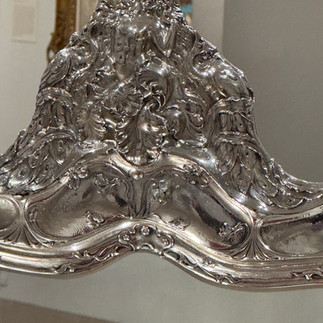











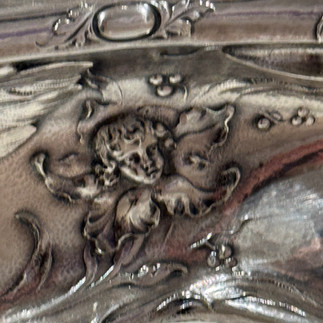



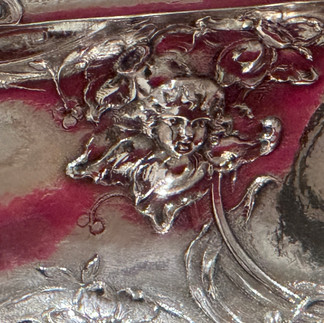










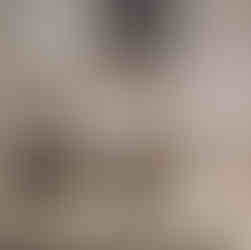


























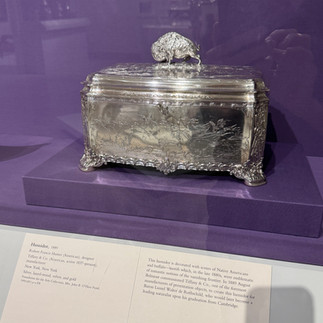

















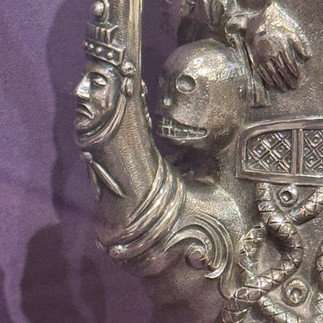





















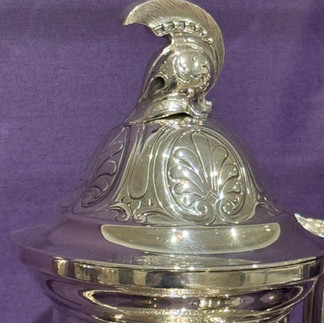









That is an awesome museum for antique silver!